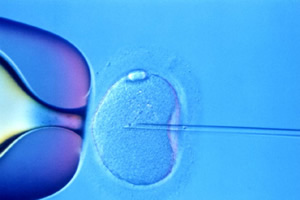
Intrauterine insemination is the introduction of pretreated viable sperm into the uterus to improve the chances of pregnancy. It is done in couples where the woman has patent fallopian tubes and the partner has normal semen parameters. The processed material is placed near the fallopian tubes, and if the procedure is combined with ovarian stimulation, there will be more eggs available for fertilization.
Accurate timing of insemination is very important. It is done when ovulation is about to occur, during, or just after it has occurred.
With the help of blood tests and ultrasound observations, the growth of the leading follicle (or follicles, if the cycle has been previously stimulated) is monitored. With the information received, the moment of ovulation (release of a mature egg) is established. When this moment occurs, the partner ejaculates, which is treated with a medium in the embryology laboratory, isolating the best quality spermatozoa with which the insemination will take place.
With a fine catheter, the gynecologist places the processed sperm directly into the uterine cavity near the fallopian tubes.
The procedure is quick and painless. It is done on a gynecological chair, and afterward, the woman goes to the restroom. After performing the insemination, the woman is allowed to lie down for about 30 minutes.
After insemination, hormonal (progesterone, estrogen, CHG) preparations can be prescribed until the pregnancy test, which is done after 14 days.
The success rate of intrauterine partner insemination is usually between 10 – 15% per cycle.
